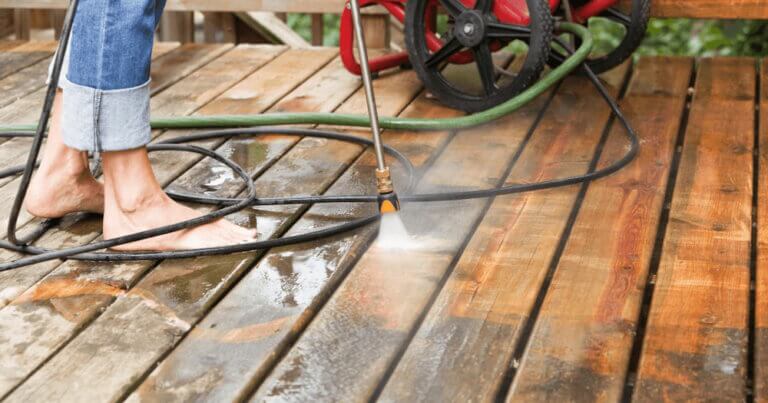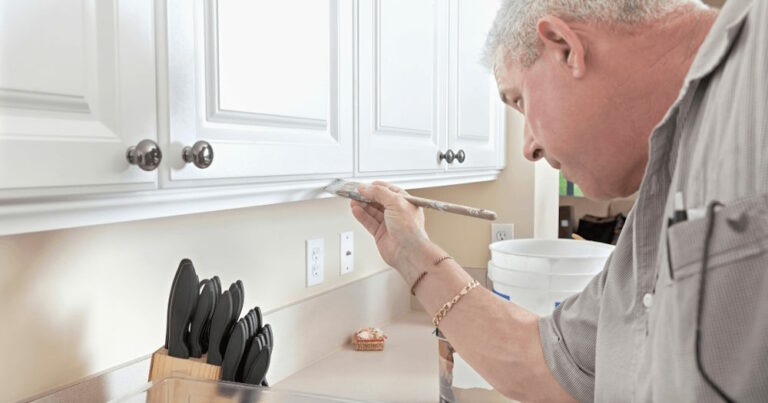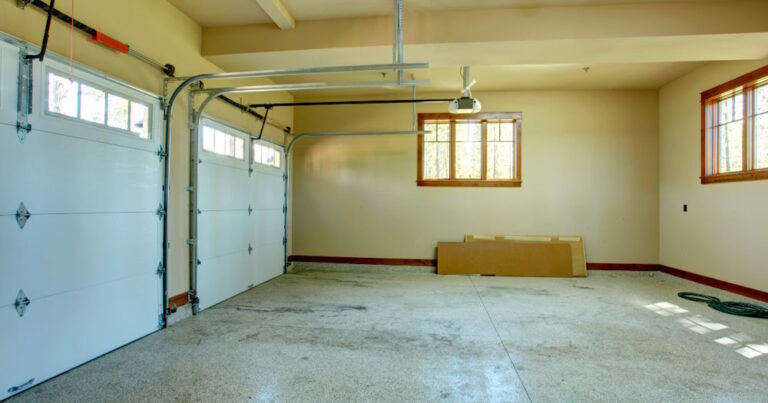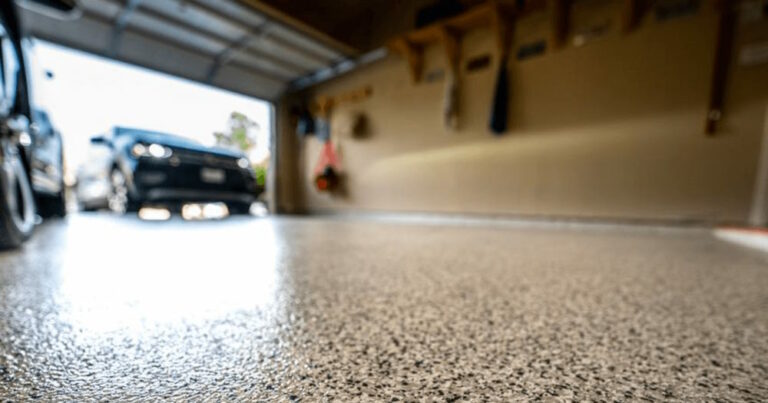Painting the exterior of your house is an excellent way to give your home a fresh, updated look and increase its value.
However, before embarking on this project, it’s essential to understand how much it would cost to paint the exterior of your home.
In this comprehensive guide, we will explore everything you need to know about exterior house painting cost, from the various factors that influence the cost to budgeting tips and more.
Key Takeaways
- Exterior painting cost of your house can vary based on several factors.
- Proper preparation is essential before painting your house’s exterior.
- The type and quality of paint you choose can significantly impact the cost and longevity of the paint job.
- Deciding whether to hire professional painters or tackle the project yourself can have cost implications.
- Effective budgeting and planning are crucial for a successful and affordable exterior house painting project.
Factors Affecting Exterior House Painting Cost
Exterior painting costs are a significant investment, and several factors can affect the overall cost. Here, we will discuss the key factors that can influence the cost, including:
Size of Your House
The size of your house is one of the main factors that affect the overall cost of your painting project. A larger house will require more paint, more supplies, and more time to complete than a smaller house. It’s important to consider the square footage of your house and factor that into your budget when estimating the cost of the project.
Condition of the Surfaces
The condition of the surfaces also plays a crucial role in determining the cost of your exterior house painting project. If your house is in good condition, it may require minimal surface preparation, such as cleaning and sanding, before painting. However, if there is extensive damage, such as rotting wood or peeling paint, it will require more time and labor to repair, ultimately increasing the cost.
Type of Paint Used
The type of paint you choose can significantly impact the cost of your painting project. Premium quality paint will cost more than standard quality paint, as it’s more durable, resistant to weathering, and provides a better finish. It’s crucial to choose the right paint that fits your budget and provides long-lasting results.
Additional Preparation or Repairs Required
In some cases, additional preparation or repairs may be necessary before painting. This can include power washing the exterior, replacing damaged wood, filling cracks and gaps, or applying primer to the surfaces. These additional steps can increase the overall cost of your project, so it’s essential to have a comprehensive plan in place.
By considering these cost factors, you can develop a better understanding of how to budget and plan for your exterior house painting project.
Preparing for Exterior House Painting

Proper preparation is key to achieving a successful and long-lasting exterior house painting project. In this section, we will outline the necessary steps to prepare your house for painting, from cleaning to priming.
Clean the Surfaces
Before you start painting, it’s crucial to ensure that the surface you will be painting is clean and free from dirt, dust, grime, and other contaminants that may affect the adhesion of the paint. Use a pressure washer or a garden hose to wash away the dirt, and scrub the surfaces with a stiff brush and a detergent solution if necessary. Rinse well and let the surfaces dry completely before proceeding to the next step.
Scrape and Sand
If there are areas with loose or peeling paint, scrape them off using a scraper or a putty knife. Sand the edges of the scraped areas to feather them out and create a smooth transition with the rest of the surface. Sand the entire surface with medium-grit sandpaper to remove any remaining loose paint and to ensure proper adhesion of the new paint.
Repair Damaged Surfaces
Inspect the surfaces for any cracks, holes, or other damage that may require repair before painting. Use a filler or a patching compound to fill in the holes, and sand the patched areas smooth once they’re dry. Replace any damaged or rotted wood and seal the joints and seams with caulk.
Prime the Surfaces
Priming the surfaces is an essential step that can improve the adhesion of the paint, hide stains and imperfections, and enhance the durability of the paint job. Apply a coat of primer to the surfaces, following the manufacturer’s instructions, and let it dry completely before painting.
By following these steps, you can ensure that your exterior house painting project starts on the right foot and results in a smooth, even, and long-lasting finish.
Choosing the Right Paint for Your Exterior
Choosing the right paint for your exterior house painting project is essential for achieving a long-lasting, high-quality finish. There are several factors to consider when selecting the type of paint for your home, including the climate in your area, the surface condition, and the desired finish.
Color
Choosing the right color is perhaps the most exciting part of the exterior house painting process. However, it’s crucial to consider the existing hues of your neighborhood and your home’s style and architecture. A color that looks great on one house may not work on another. When selecting a color scheme, keep in mind the overall effect you want to achieve. Do you want your home to blend in or stand out?
Type of Paint
There are two main types of exterior paint: oil-based and latex-based. Oil-based paints offer superior adhesion, making them an excellent choice for surfaces that are prone to cracking and peeling. They also provide a smoother finish and are more resistant to fading. However, they take longer to dry and require mineral spirits for clean-up. On the other hand, latex-based paints are easier to clean up, dry quickly, and are more flexible, making them ideal for surfaces that expand and contract with temperature changes.
Finish
The finish you choose can also impact the appearance and durability of your exterior paint job. Common finishes include flat, satin, semi-gloss, and high-gloss. Flat finishes hide surface imperfections but are less durable, while glossier finishes are more durable but can highlight surface flaws.
Brand
Choosing a high-quality paint brand can make a big difference in the appearance and longevity of your exterior house painting project. Look for a brand that offers a wide range of colors, finishes, and products specifically designed for exteriors. Some reputable brands include Sherwin-Williams, Benjamin Moore, and Behr.
Consider all of these factors when choosing the right paint for your exterior house painting project to ensure a professional-looking finish that will last for years to come.
Hiring Professional Painters vs. DIY
Deciding whether to hire professional painters or tackle the painting project yourself can have a significant impact on your budget. Here, we will weigh the pros and cons of both options and help you make an informed decision that aligns with your needs and expertise.
Pros and Cons of Hiring Professional Painters
Professional painters can offer various advantages, such as:
- Expertise and experience in painting techniques, color matching, and finishes.
- Access to professional-grade tools, equipment, and materials.
- A guarantee of quality workmanship and timely completion.
- Liability insurance that protects you from accidents or damages.
On the other hand, hiring professional painters can have some disadvantages, such as:
- Higher costs compared to DIY, including labor, materials, and overhead expenses.
- Limited control over the painting process, including the choice of colors, techniques, and scheduling.
- The need to research and compare different painters before hiring one to ensure their reliability and reputation.
Pros and Cons of DIY Painting
Painting your house exterior yourself can also offer some benefits, such as:
- Saving money on labor costs and getting more control over the project’s budget.
- Flexibility in choosing the colors, finishes, and painting methods that suit your preferences.
- A sense of accomplishment and satisfaction in completing a DIY project.
However, DIY painting can also have its drawbacks, such as:
- Less experience and knowledge in painting techniques, which can lead to errors and mistakes.
- Fewer resources and equipment, which can affect the quality and durability of the paint job.
- A longer time to complete the project, especially if you are doing it alone or in your spare time.
- No liability insurance, which means you will be responsible for any accidents, damages, or injuries that may occur.
Which Option Is Best for You?
Choosing whether to hire professional painters or take the DIY route depends on several factors, including:
- Your budget and willingness to spend money on professional help.
- Your level of expertise and confidence in doing the job yourself.
- The size and complexity of your house exterior painting project.
- Your time availability and scheduling preferences.
- Your desired outcome and expectations for the paint job.
Ultimately, you should consider all the pros and cons of each option and choose the one that fits your needs and resources the best.
Estimating Exterior House Painting Cost
Estimating the cost for your exterior house painting project can be a daunting task. It is essential to have an accurate idea of the expenses to avoid unexpected costs and effectively manage your budget. Here, we have broken down the various cost elements involved, so you can get a general idea of the overall cost of your painting project.
Paint
The cost of paint is often the most significant expense in a painting project. The total amount of paint required depends on the size of your house and the number of coats applied. High-quality exterior paint can cost between $25 and $50 per gallon, and a typical average home requires 15-20 gallons of paint.
Labor
The cost of labor varies significantly, based on the size and complexity of the painting project, location, and labor market. Generally, professional painters charge between $30 to $50 per hour, and a typical house painting job can take between 2 to 3 weeks.
Supplies and Equipment
Other expenses involved include supplies and equipment, such as brushes, rollers, ladders, and primer. These costs can vary depending on the quality and quantity of materials needed. A typical range for these expenses is between $100 to $300.
Additional Services
Depending on the condition of your home, you may require additional services, such as power washing, repairing damaged surfaces, or removing old paint. These services can add extra expense to your project, and you should discuss the costs with your contractor or supplier.
Total Cost Estimate
Based on the above factors, you can expect an average cost range of $2,500 to $5,500 for your exterior house painting project. However, this is an average, and the actual cost may vary, depending on your location, the square foot size and condition of your home, and the specific requirements of your project.
It is worth noting that while DIY painting may seem like a cost-effective alternative, it can be challenging and time-consuming, and if not done correctly, it can lead to additional expenses. Your best bet is to hire professional painters, as they can provide you with a detailed and accurate cost estimate, ensuring no hidden costs or surprises along the way.
Budgeting Tips for Exterior House Painting
Planning and budgeting are crucial when it comes to exterior house painting. Here are some helpful tips to keep your project on track:
1. Set a Realistic Budget
Start by determining how much you can afford to spend on the painting project. Consider the size of your house, the cost of supplies, and whether you plan to hire professionals or do it yourself. Be sure to set aside extra funds for unexpected expenses.
2. Prioritize Your Tasks
If your budget is limited, prioritize which areas of your house need painting the most. For example, the front door and trim may have a more significant impact on your home’s curb appeal than the garage door.
3. DIY or Hire Professionals?
Deciding whether to hire professional painters or tackle the project yourself can have cost implications. While hiring professionals may initially seem more expensive, it can save you time, provide expert advice, and ensure a more professional-looking finish. However, if you have the knowledge, skills, and time to paint the exterior of your house yourself, you can save money on labor costs.
4. Pick the Right Paint at the Right Price Point
Choosing the right paint for your exterior house painting project can significantly impact the overall cost and longevity of the paint job. Consider high-quality paints that can withstand extreme weather conditions and use fewer coats, saving you time and money in the long run. However, keep an eye out for sales and discounts to get the right paint at the right price point.
5. Save Money on Supplies
Take advantage of sales and coupons when purchasing supplies such as paintbrushes, rollers, and other accessories. You can also consider borrowing or renting equipment rather than purchasing it outright, further reducing costs.
6. Don’t Sacrifice Quality
While it’s important to stay within your budget, don’t sacrifice quality in the process. Low-quality paints or rushed preparation can lead to a shorter lifespan of your paint job and costly repairs down the road. Invest in high-quality paints and proper preparation to ensure a long-lasting finish.
7. Keep a Record of Expenses
Keeping a record of your expenses can help you stay on track with your budget and make informed decisions for future projects. Be sure to include receipts, invoices, and any other relevant documents to support your spending.
By following these budgeting tips, you can ensure a successful and affordable exterior house painting project without compromising on quality.
Enhancing Curb Appeal Through Exterior House Painting
When it comes to increasing your home’s curb appeal, painting the exterior is a cost-effective and impactful way to achieve a fresh, updated look. Here are some tips and tricks to enhance your home’s aesthetic appeal through exterior house painting.
Choosing the Right Colors
The color scheme you choose can significantly impact your home’s curb appeal. Consider the architecture style, the neighborhood’s aesthetics, and your personal preferences when selecting colors. Neutral colors like beige, gray, and white offer a classic and timeless look, while bolder colors like navy or emerald green can add a pop of personality.
Tip: Don’t forget about accents! Painting your front door or shutters with a contrasting color can add depth and interest to your home’s exterior.
Using High-Quality Paints and Finishes
Investing in high-quality paints and finishes can not only improve your home’s curb appeal but also ensure the longevity of the paint job. Consider using paints that have a high degree of UV protection and resistance to weather damage and mold. Finishes like matte, satin, or glossy can have different visual effects and can further enhance your home’s appearance.
Applying Professional Techniques
Professional painting techniques such as color blocking, accent walls, or textured finishes can elevate your home’s exterior look and make it stand out in the neighborhood. Professional painters can also help you determine the best techniques to achieve the desired effect and ensure a polished and clean paint job.
Adding Some Landscape
Adding some landscape elements like flowers, shrubs, or trees can complement your home’s exterior colors and overall aesthetic appeal. Consider incorporating plants with complementary colors to the paint job and ensuring that it is well-maintained and well-manicured.
Boosting Market Value
Enhancing your home’s curb appeal through exterior house painting can also increase your home’s market value, a crucial factor if you’re planning to sell your home. A fresh, updated look can attract potential buyers and increase the likelihood of a higher selling price.
Conclusion

As you can see, the cost of exterior house painting depends on several factors that need to be taken into account. From the size and condition of your house to the type of paint and preparation required, each element affects the overall cost.
Before starting your project, it’s crucial to prepare your house properly, including cleaning, scraping, sanding, and priming. Choosing the right paint for your specific needs is also essential as it can impact both the cost and longevity of the job.
Deciding whether to hire professional painters or tackle the painting project yourself is another factor that can have cost implications. It’s essential to weigh the pros and cons of both options and make an informed decision that aligns with your budget and expertise.
Estimating the cost of your exterior house painting project depends on various elements and requires careful consideration. Budgeting wisely, finding cost-saving strategies, and prioritizing tasks can help you achieve a successful and affordable painting project.
By following the tips and guidelines provided in this guide, you can confidently plan your budget and achieve the desired results for your home’s curb appeal. Not only will a fresh coat of paint protect your house, but it will also enhance its curb appeal and increase its market value.
FAQ
What factors can affect the cost of exterior house painting?
The cost of exterior house painting can be influenced by factors such as the size of your house, the condition of the surfaces, the type of paint used, and any additional preparation or repairs required.
How should I prepare my house before painting the exterior?
Proper preparation is crucial before painting the exterior of your house. This includes cleaning, scraping, sanding, and priming the surfaces to ensure a smooth and long-lasting paint job.
What should I consider when choosing paint for my exterior?
When selecting paint for your exterior, it’s important to consider factors such as the right color, finish, and brand that suits your specific needs. The type and quality of paint can impact the cost and durability of the paint job.
Should I hire professional painters or paint the exterior myself?
Deciding between hiring professional painters or doing the job yourself can have cost implications. Weigh the pros and cons of each option, considering factors such as your budget and expertise, to make an informed decision.
How can I estimate the cost of exterior house painting?
Estimating the cost of exterior house painting involves considering various elements, including paint, labor, supplies, and additional services. By breaking down these cost factors, you can get a better idea of the overall project cost.
What are some budgeting tips for exterior house painting?
Planning and budgeting are essential for a successful exterior house painting project. In this section, you’ll find practical tips and advice on effective budgeting, cost-saving strategies, and prioritizing tasks to achieve an affordable and satisfactory outcome.
How can exterior house painting enhance curb appeal?
Painting the exterior of your house not only protects it but also enhances its curb appeal. By choosing the right colors, finishes, and techniques, you can transform your home’s appearance and increase its market value.





